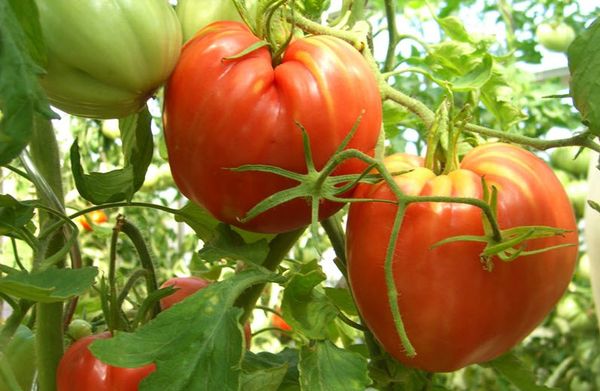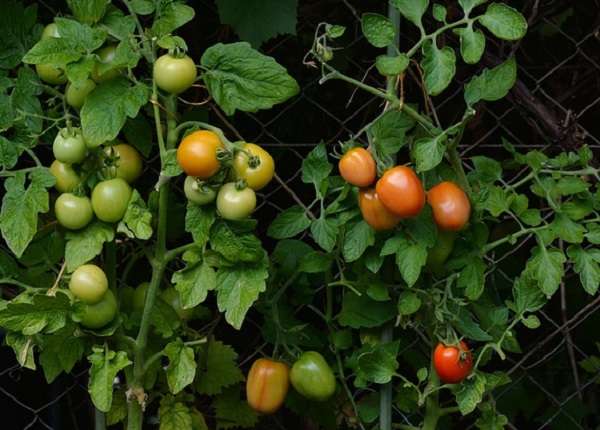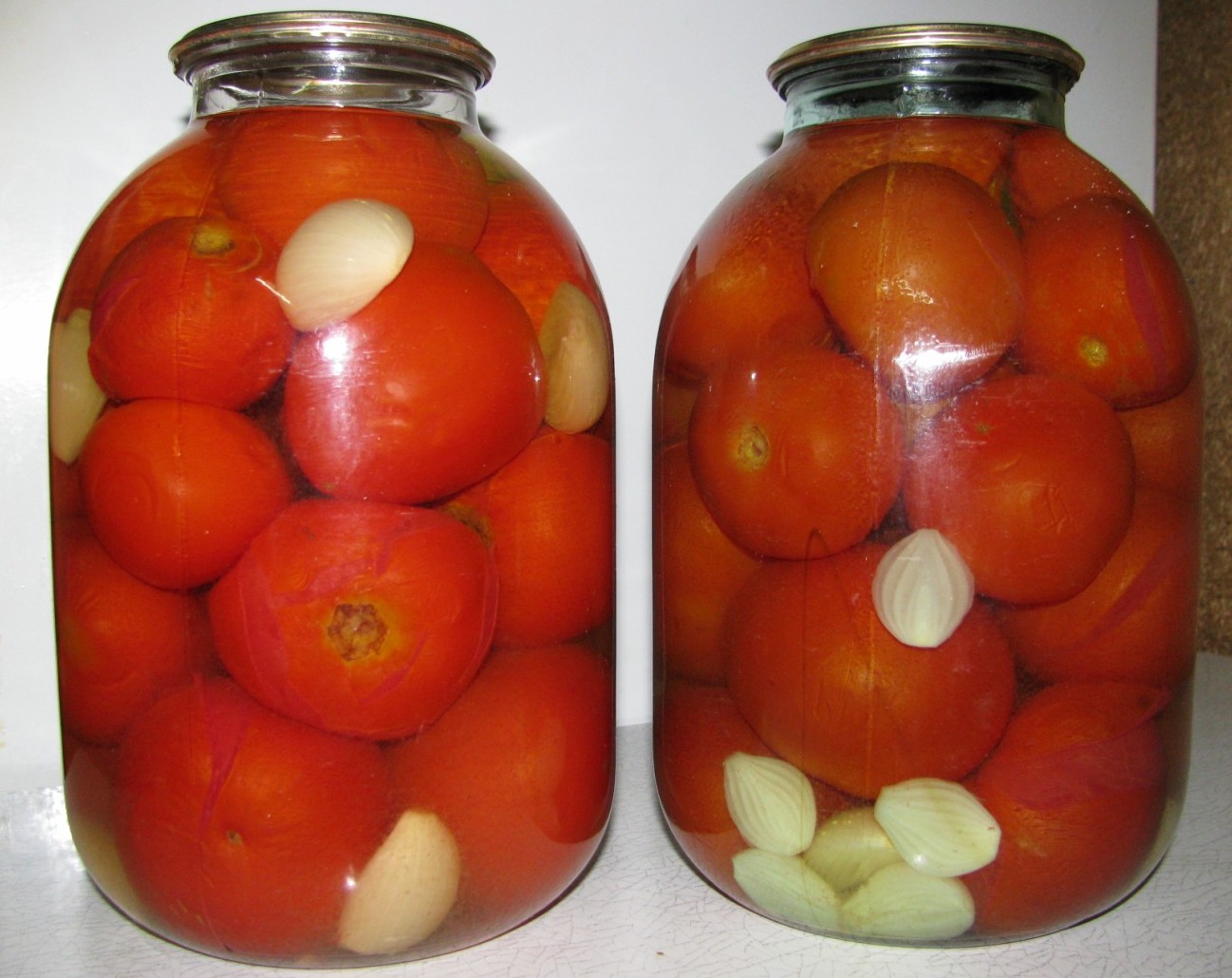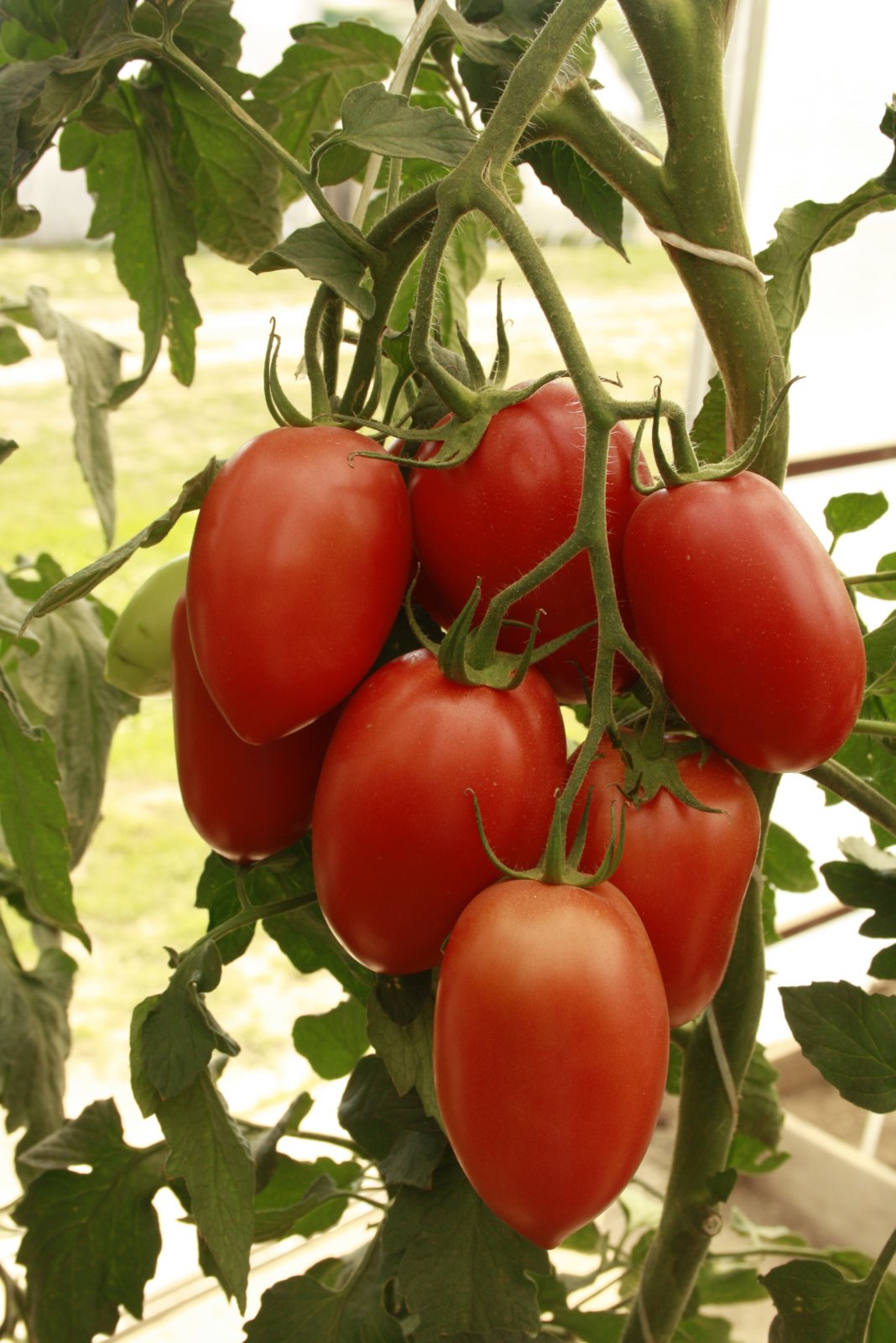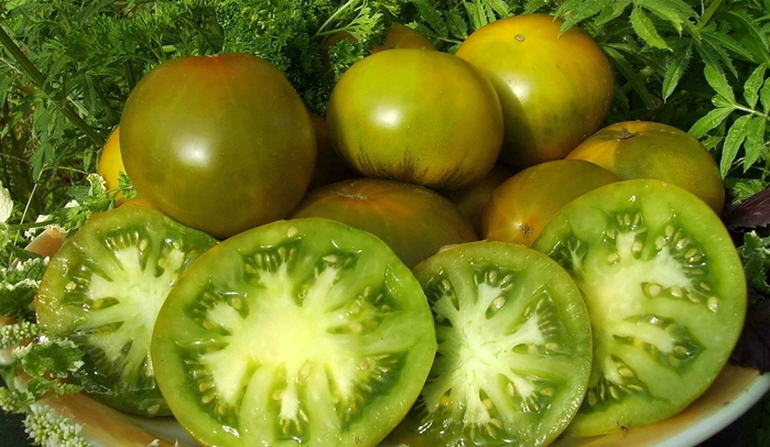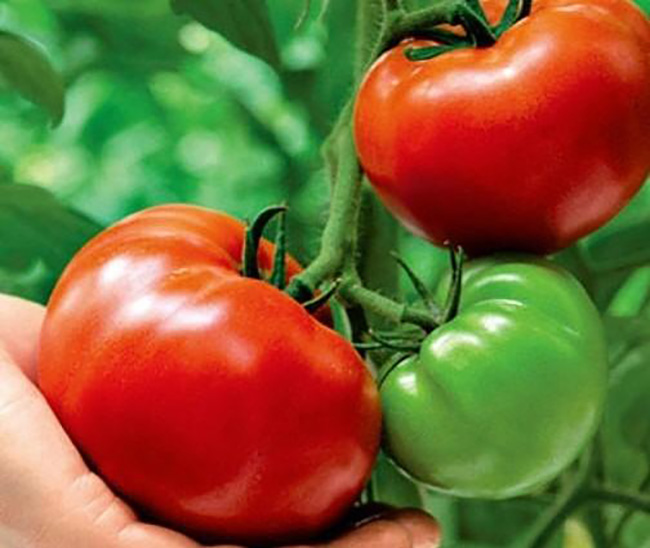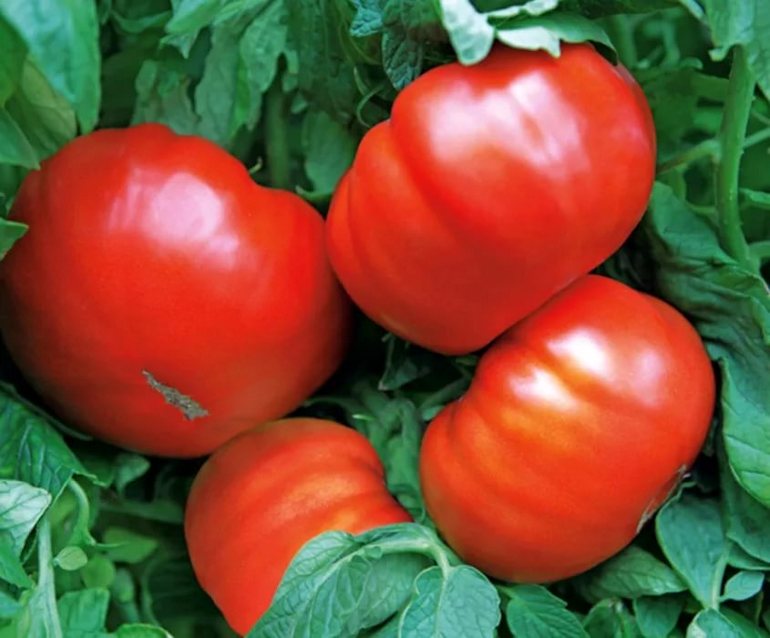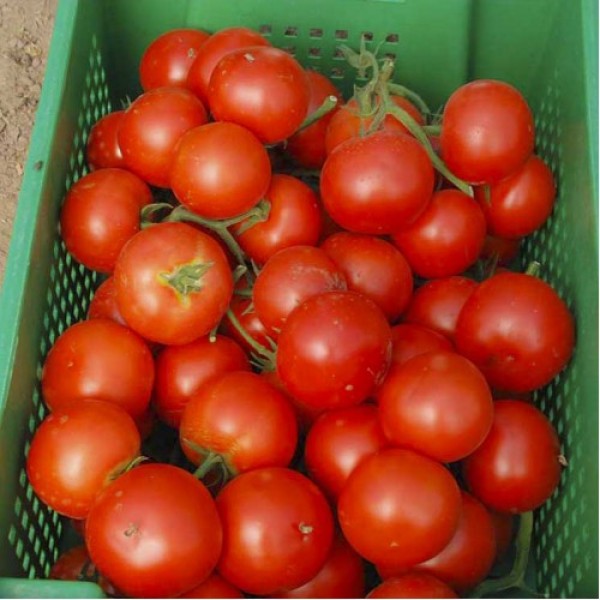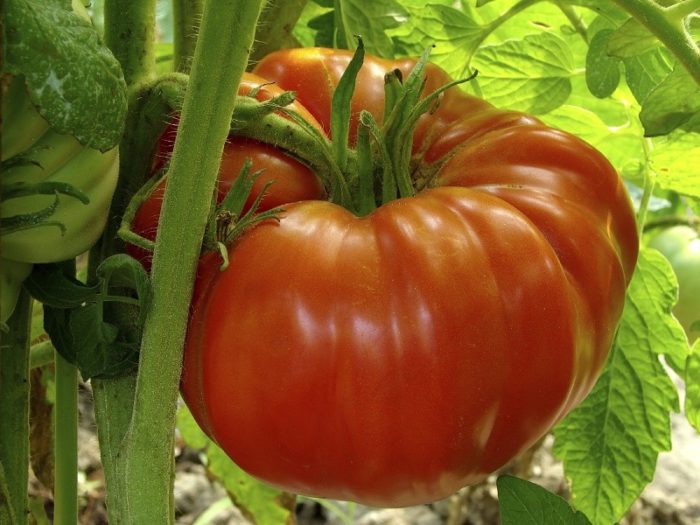Content:
Tomato Cardinal is a mid-early hybrid suitable for growing in a greenhouse, outdoors. The variety is self-pollinated. The fruits are large, smooth, fleshy, with a raspberry-pink peel, resistant to transportation. Registered weight - 442 grams. The author of the variety is Elena Sysina. The patent holder is the Tomagros company, the sponsor is Gisok-Agro. In the State Register, the variety has been listed since 1998, as a crop for personal plots, small farms.
Description of the variety of tomatoes Cardinal
Numerous reviews of indeterminate Tomato Cardinal help determine the characteristics and description of the variety:
- The culture is low-branched, slightly leafy, the stems are fragile. Leaves are ordinary, medium-sized, light green in color, with a barely noticeable relief;
- Inflorescence is a simple raceme with a weak wrinkle, loose structure;
- Fruits are formed on branches of 5-7 vegetables. On the lower brushes, vegetables are larger, at the top - smaller;
- The crop is fruitful, harvesting continues throughout the season. The mass of tomatoes of the first fruiting reaches 1 kg, further harvests - 400 g;
- Gardeners receive the first fruits in early July. The ovaries continue to bloom and form until the end of the season;
- Indicators of productivity of one bush - 4.5 kg / season. One meter of the plantation can harvest 16 kg of Solanaceae;
- Unripe tomatoes are green with dark spots at the stalk. Ripe vegetables attract with a rich pink hue;
- The growing season of the plant is classified as mid-season. The interval between shoots and fruiting is 110-120 days;
- Inflorescences are formed after 3 leaves, the first one is laid over 8-12 true leaves. Fruits ripen sequentially, on clusters of different heights;
- In greenhouse conditions, the bushes grow up to 2 m, in open beds - 1.5 m.
Variety subspecies
Description of the Cardinal tomato subspecies:
- Cardinal Richelieu is a high-yielding variety of lettuce tomatoes, recommended for fresh consumption: for salads, slicing. Forms fruits of a pink shade of a flattened shape with small projections resembling a tail. The mass of one vegetable is 500-600 grams;
- Cardinal Mazarin - tomatoes named after the French Cardinal Giulio Mazarin. The pointed beard of the celebrity is associated by selectors with the cone-shaped fruit of the tomato. Red symbolizes bloodshed during the French Civil War under the Cardinal. The culture is distinguished by high agrotechnical properties. Fruit weight - 400-700 g.
Fruit characteristics
The fruits of Cardinal tomatoes are large, stored for a long time, and tolerate transportation well. The appearance of the tomato has a presentation, heart-shaped. The skin is dense, shiny, with small projections in the form of ribs. Tomatoes are fleshy, sweet, without streaks, cracks. The pulp is juicy, slightly sour. The high sugar content of trace elements makes vegetables very nutritious. The aroma is pleasant, tomato, pronounced. The small seed chambers of vegetables contain small grains.
Tomato agricultural technology Cardinal
Planting seeds of Cardinal tomatoes is carried out in March, stimulating plant growth with soaking technology (12 hours), industrial preparations or fresh aloe juice. The culture takes root well on light, nutritious, disinfected soil. By calcining the soil for planting seedlings in the oven at a temperature of 60 degrees, the number of harmful larvae will be reduced to "0".Then the soil for seedlings is fertilized with old humus, wood ash, superphosphate.
The seeds are germinated in containers or peat pots at a depth of 2 cm. The soil is moistened with warm water from a spray bottle, the boxes are covered with polyethylene. The optimum ambient temperature for seedling growth is 25-26 ° C. When the first shoots appear, the containers are placed in a well-lit place, waiting for the first leaves to open. Seedlings are placed in pots, providing watering, saturation with mineral fertilizers.
At the age of two months, the seedlings are transferred to a permanent place. Before planting in the ground, they are subjected to secondary fertilization (a solution of superphosphate, potassium sulfate, urea). The bushes placed in the greenhouse are transplanted in early May, the seedlings are transported to open beds in June, having previously equipped the holes with wood ash.
The ideal option for creating tomato beds would be a place where beans, cabbage, and carrots grew. It is not recommended to plant tomatoes in place of peppers, potatoes, eggplants. Planting density - 2-3 specimens per 1 m². The formation of bushes takes place in one or two stems. For garters, trellises are preferred, which create reliable support for the stems, heavy branches with fruits. The lower leaves and lateral processes are removed.
Three or four times a season, a complex fertilizing of the bushes is carried out with fertilizers (nitroammophos with a high content of nitrogen, phosphorus, potassium). Greenhouses and hotbeds are ventilated. Weeds in the aisles are removed, the plantation is mulched with straw, peat, humus. If the greenhouse does not manage to maintain the recommended level of lighting, the topsoil should be changed annually, improved, and supplied with nutrients. Plants placed outside require tops trimming in August, allowing the fruits to form and ripen. Tomatoes are watered at the rate of 1 bucket / bush, once a week. It is not allowed to get water on the leaves, fruits.
Tomato care
Field tomatoes Cardinal need moderate watering, disease prevention. Seedlings and mature plants are inspected weekly under the leaves. If a cobweb, adhesive streaks are found, the damaged areas are treated with a damp cloth, the plants are sprayed with a weak solution of potassium permanganate. Young bushes protect from late blight, root rot, scab with Fitosporin, a slightly colored solution of potassium permanganate. A solution of laundry soap, a spider mite, a Colorado potato beetle will help to destroy aphids - an insecticide. An aqueous solution of ammonia effectively fights slugs.
Preventive spraying is carried out, focusing on the season. In rainy weather, the use of fungicides is relevant, the invasion of harmful insects is blocked by insecticides. Biological preparations, infusions of onion, garlic husks successfully cope with fungal and viral infections. Watering tall plants with a well-developed main root, many adventitious processes should be done carefully, avoiding exposing the root system, which supplies the powerful bush with nutrients.
Pros and cons of the Cardinal variety
Cardinal tomatoes are versatile, they are eaten raw, cold, hot dishes. In the reviews, users share recipes for delicious juices, sauces, mashed potatoes, salads. Cardinal tomatoes are especially tasty in pickled form. The fruits are distinguished by a pleasant tomato aroma, firm but not tough skin, fleshy, juicy composition.
The culture takes root well in greenhouses and greenhouses, quickly rises in the open field. The variety is resistant to bad weather conditions. Many people note the good quality of the planting material, which is widely used by novice gardeners and professionals.Seeds from our own bushes are suitable for reproduction, allowing you to increase the plantation without additional costs. The advantages of the variety also include early resistant (up to frost) fruiting, high resistance to drought, and resistance to diseases typical of Solanaceous crops.
There are few disadvantages of the Cardinal tomato, their role is not critical for growing a crop, the list of key features includes:
- the need to form a bush to increase yields;
- obligatory tying of plants at the stage of planting, stem growth;
- the impossibility of salting the fruits of the first fruiting entirely due to their large dimensions;
- maintaining a high air temperature for productivity and a pronounced taste of tomato, greenhouse placement will allow providing favorable conditions.
Cardinal tomatoes are an excellent solution for residents of regions with a warm temperate climate. In areas with cool summers and early frosts, tomatoes will give a good harvest when greenhouse conditions are created.
